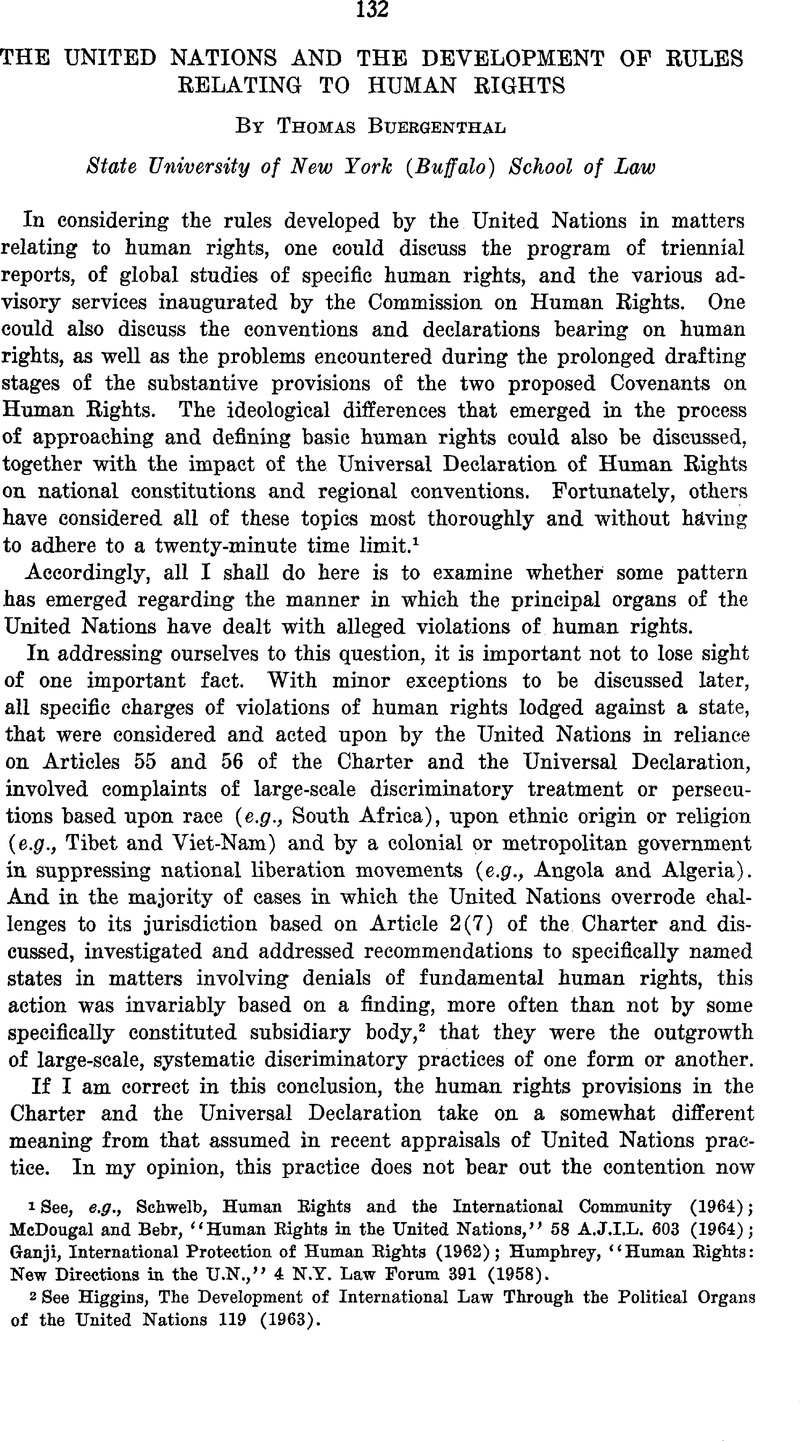Published online by Cambridge University Press: 27 February 2017

1 See, e.g., Schwelb, Human Eights and the International Community (1964); McDougal and Bebr, “Human Eights in the United Nations,” 58 A.J.I.L. 603 (1964); Ganji, International Protection of Human Eights (1962); Humphrey, “Human Eights: New Directions in the U.N.,” 4 N.Y. Law Forum 391 (1958).
2 See Higgins, The Development of International Law Through the Political Organs of the United Nations 119 (1963).
3 See, e.g., Ganji, op. cit. note 1 above, at 136-138.
4 General Assembly, Res. 1514 (XV), Dee. 14, 1960.
5 General Assembly, Ees. 1904 (XVIII), Nov. 20, 1963.
6 A similar formulation can be found in Art. I of the Preliminary Draft Declaration on the Elimination of all Forms of Eacial Intolerance. Commission on Human Eights, Eeport on the 20th Session, par. 294 (UN. Docs. E/3873; E/CN.4/874).
7 Economic and Social Council, Res. 75(V), Aug. 5, 1947; reaffirmed, Res. 728F (XXVIII), July 30, 1959. Parenthetically, it might be noted that in the ten-year period from 1947 to 1957, for example, approximately 65,000 communications have been received and that of these more than 63,000 charged specific violations of human rights. See Commission on Human Rights, Report of the 14th Session, par. 186 (U.N. Docs. E/3088; E/CN.4/769).
8 See Report of the Special Committee on the Situation with Regard to the Implementation of the Declaration on the Granting of Independence to Colonial Countries and Peoples, Ch. I, pp. 5-60, Dec. 31, 1964 (U.N. Doc. A/5800/Rev. 1).
9 See Report of the Special Political Committee, Part II, pars. 7 and 9, Dec. 12, 1963 (TJ.N. Doc. A/5565/Add. 1).
10 See General Assembly, Ees. 1970 (XVIII), Dec. 16, 1963.